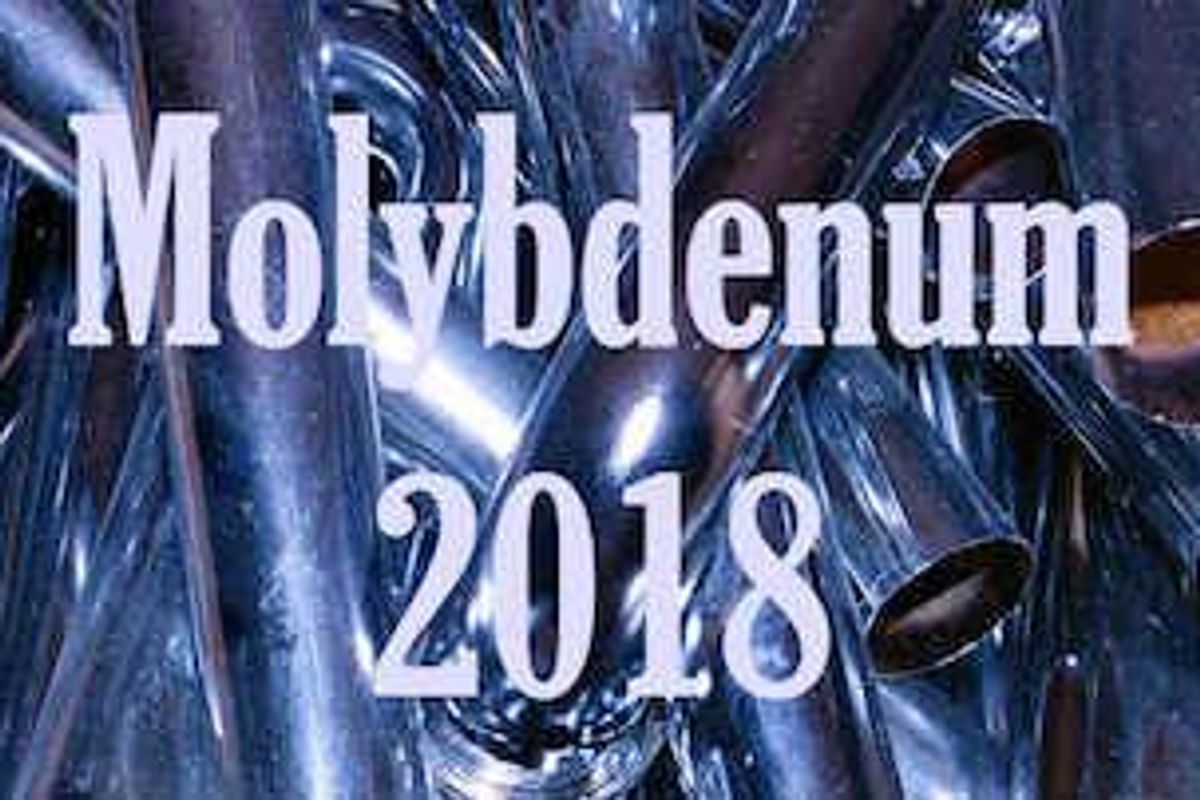Molybdenum Outlook 2018: Prices to Continue Slow Recovery

The global molybdenum market is expected to grow at a CAGR of over 3 percent from 2017 to 2021. Learn more here about the molybdenum outlook.
The molybdenum market continued its slow recovery in 2017, and the outlook for 2018 is for more of the same.
At the end of 2016, molybdenum oxide prices were sitting at $6.70 per pound, but by the middle of October they had gained 29 percent to reach $8.65. As of mid-December, prices were slightly lower, at $7.26.
In April, ferromolybdenum prices increased to $5.54 per pound, their highest level in two years. Meanwhile, LME molybdenum had a cash bid price of $15,500 per tonne as of mid-December, up from $14,750 at the end of 2016. Read on to learn what’s coming for the molybdenum outlook in 2018.
Molybdenum outlook 2018: Supply
According to Roskill, the increase in ferromolybdenum prices early this year was the result of growing demand from stainless steel producers and production closures in China.
In Q1, several molybdenum mines stopped production in China for Chinese New Year and lantern festivals. Restarts were delayed due to lower prices, but the mines started up again in Q2, causing ferromolybdenum prices to fall. However, environmental inspections at mines and processing facilities in July further disrupted production. China is the largest producer of molybdenum, accounting for about 37 percent of total global output.
About half of molybdenum is extracted as a by-product of copper mining, and prices saw some support from copper mine disruptions this year. For example, Freeport-McMoRan’s (NYSE:FCX) Cerro Verde mine in Peru experienced strikes in Q1, impacting molybdenum production
Roskill said a nationwide mining strike in Peru was expected to affect mines operated by Antamina, Freeport-McMoRan, Southern Copper (NYSE:SCCO) and MMG (HKEX:1208) in Q3. However, in November, Southern Copper said in a statement to Peru’s market regulator that workers had begun to strike, but that normal mining operations were not affected.
Peru’s Energy and Mines Ministry also said that the country’s mining sector saw an 8-percent increase in molybdenum production in the first 10 months of 2017 over the same period last year.
Also on the supply side, Roskill notes that Anglo American (LSE:AAL) has accelerated expansion plans for its Quellaveco copper-molybdenum mine in Peru. In April, Reuters reported that all permits had been approved for the project.
Molybdenum outlook 2018: Demand
According to the International Molybdenum Association, 80 percent of the molybdenum that is mined each year is used to make stainless steel, cast iron and superalloys.
In November, General Moly (TSX:GMO,NYSEAMERICAN:GMO) CEO Bruce D. Hansen said that “steel demand in China and worldwide has rebounded strongly in 2017 underpinning molybdenum demand.” Meanwhile, the International Stainless Steel Forum notes that stainless steel production increased by 5 percent year-on-year, to 23.2 million MT, during the first half of 2017.
Molybdenum is also used in structural steels for offshore oil rigs, as well as in oil and gas pipelines, because of its corrosion resistance, strength and durability. “Much of the demand growth for molybdenum products has been from increased purchases from the oil and gas industry, particularly in North America,” Roskill observes.
Hansen said, “in the United States and around the world, oil and gas drilling activity requiring moly-reinforced steel has bounced back to over 2,000 operating rigs, a level last seen two years ago. While the fourth quarter typically reflects lower molybdenum demand from steel producers during the winter, we believe we will continue to see higher quarterly highs and lows in the molybdenum prices in 2019.”
The global molybdenum market is expected to grow at a CAGR of more than 3 percent from 2017 to 2021, as per a recent market research report by Technavio. “The growth in the steel market is attributed to the increase in demand for concrete in infrastructure, transportation, and other end-user industries around the world,” said Mohd Shakeel Iqbal, Technavio’s lead analyst for metals and minerals research.
However, CPM Group predicts slower molybdenum demand growth between 2016 and 2025 compared to compound annual demand growth from the years 2009 to 2015. The firm said molybdenum prices are expected to see support from the “trend to shift towards higher molybdenum-content steels” in developing economies, particularly across Asia.
The firm also expects slower growth in molybdenum by-product production from copper mines because most mine ramp ups and expansions have already been phased into the supply curve. Supply tightness is expected to increase prices over the initial forecast years.
Molybdenum outlook 2018: Major company news
The Technavio report identifies Centerra Gold (TSX:CG), China Molybdenum (SHA:603993), Codelco, Freeport-McMoRan and Grupo Mexico as the leading players in the global molybdenum market.
In August, Freeport-McMoRan subsidiary Climax Molybdenum announced a six-year extension to its Henderson molybdenum mine in Colorado. Climax said operations at Henderson will continue until 2026 instead of 2020 as originally planned. The company noted that stronger molybdenum market conditions factored into its decision to extend the mine’s life.
Climax cut production rates at Henderson by more than half in late 2015 and early 2016, reducing molybdenum output from 27 million pounds per year to 10 million pounds. The company said Henderson will continue to operate at its reduced production rate, processing about 22,000 tonnes of ore per day to produce 10 million pounds of molybdenum annually.
Don’t forget to follow us @INN_Resource for real-time news updates!
Securities Disclosure: I, Melissa Shaw, hold no direct investment interest in any company mentioned in this article.